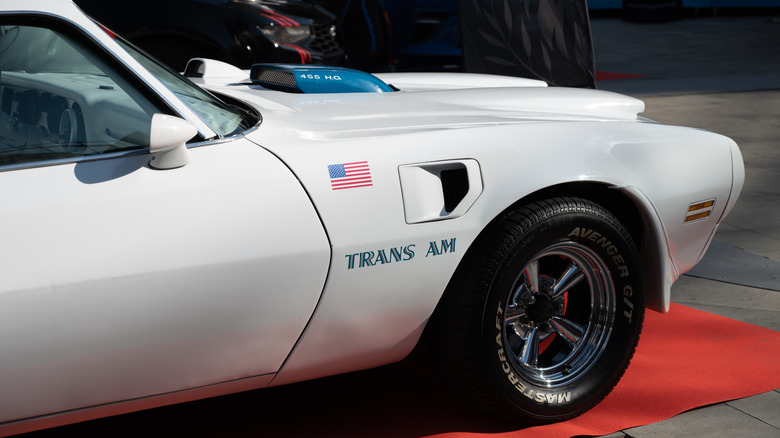What's The Difference Between The Oldsmobile And Pontiac 455?
The 1970s were a particularly upsetting time for American car enthusiasts. Not only were insurance costs climbing and new emissions regulations strangling big-capacity V8 engines, but the '73 oil crisis also sent oil and gas prices soaring. The result was ultimately the total demise of America's golden era of muscle cars, with big-block heroes ultimately being replaced by more economical and imported models, like the then-new Honda Civic.
However, before these powerful V8s died out, General Motors gifted enthusiasts with a duo of high-power, torque-heavy, and high-displacement big blocks – the 455 V8s. Despite Pontiac and Oldsmobile both existing under the GM umbrella, each automaker developed its own take on the 455 V8. These V8 engines both arrived at the tail end of the 1960s, and production lasted just a few short years, with the changing automotive landscape rendering them redundant fairly quickly. While there are significant similarities between these two engines — including the displacements — there are also a number of key differences, such as the power output and the plans each manufacturer had for its big block engines.
A closer look at Oldsmobile's 455 V8
Sporting a bore of 4.125 inches and a stroke of 4.25 inches, Oldsmobile's 455 V8 was the ultimate iteration of the automaker's second-generation Rocket V8. The engine first arrived on the scene in 1968, an important moment in Oldsmobile's history, and remained in production until 1976, although its power output had drastically reduced by the end. Throughout its time in production, Oldsmobile's 455 pushed out between 310 and 400 horsepower, with lower compression stripping the oomph away in the latter years.
The most iconic model to sport this hefty lump was the 4-4-2 muscle car, although the most powerful iteration was equipped in the Toronado W34. In the latter, the 455 produced not only 400 horsepower, but also 500 lb-ft of torque. The twist arrived low down at 3,000 rpm, with horsepower peaking at 4,800 rpm, or 5,200 in Hi-Po variants. It wasn't just Oldsmobile's more muscular models that sported the mighty 455, though, as Olds also offered the engine in more luxurious and family-oriented models like the Delta 88.
Here's where Pontiac's 455 V8 differs
Whereas the Oldsmobile engineers chased impressive outputs with high compression engines and aggressive cams, Pontiac was seemingly happy to settle for less. Don't get us wrong: with up to 370 horsepower on offer, the Pontiac 455 was no paperweight, but the automaker didn't care to chase after Oldsmobile's higher outputs.
This was largely down to a change in management at the time, with John DeLorean being replaced by a somewhat thriftier James McDonald, who didn't share the same passion for building such engines as DeLorean did. As such, exciting projects like the legendary Ram Air V engine were dropped, and further development of the 455 was also halted. That said, Pontiac continued to offer the 455 in full-size models and its flagship GTO muscle car, which was discontinued in 1974. Pontiac finally ceased producing the 455 as a whole in 1976. By this point, Pontiac's huge V8 sported lower compression than earlier efforts, and as a consequence, power dropped to 290 horsepower — 20 fewer than the final Oldsmobile engines.


